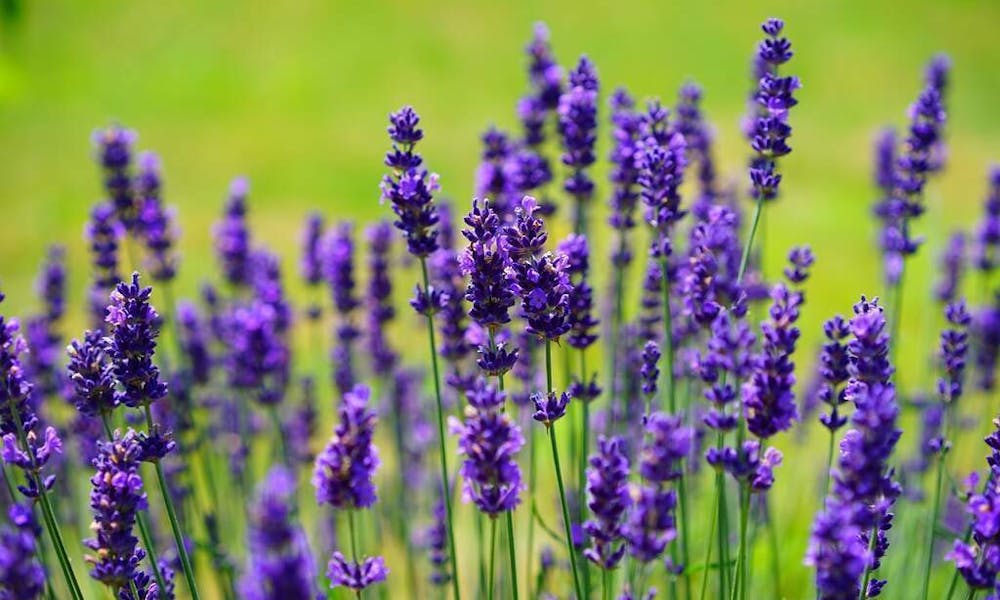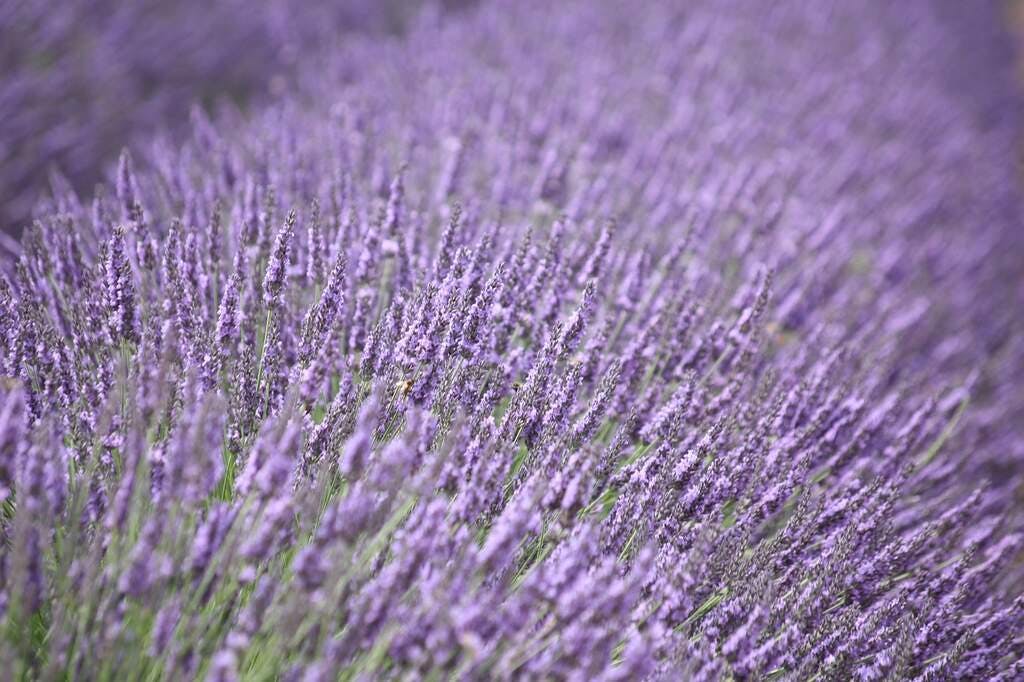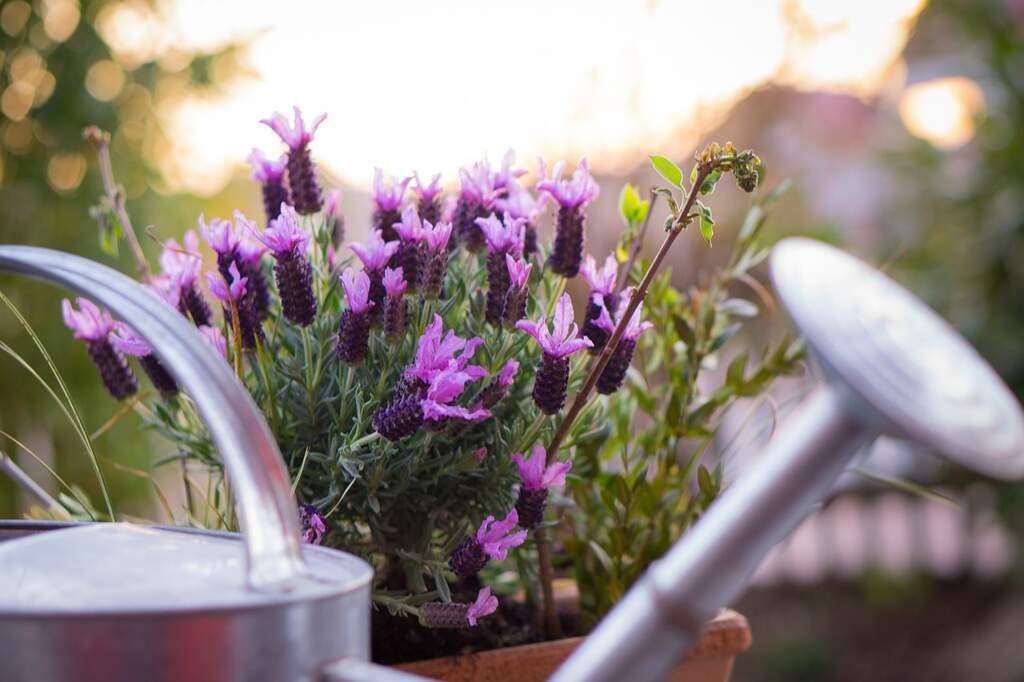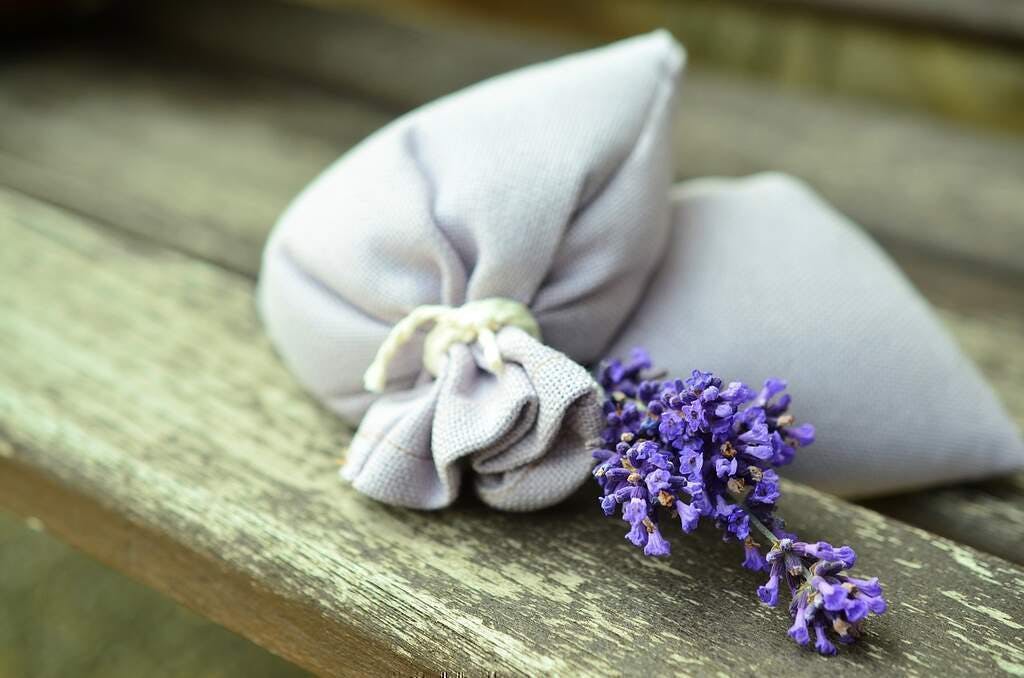MENU
All about lavender

Lavender is a plant known all around the world, it has become iconic for its calming scent and its peaceful color. So much so that there is even a color named after the light purple hue of the flower. The plant is grown almost worldwide, there are several different species of the plant and it is in the same family as mint. It is often used as a culinary herb, or as an essential oil. You can find it in beauty products, beverages, or perfumes. Its scent delights our senses and its popularity is unwavering. So why not grow your own lavender plant so that you can enjoy its multitude of benefits as you please.
Generally Lavender does not grow to great heights, but instead it grows in width, because of this its leaves are quite thick. There are about forty species of lavender, each of which is distinguished by the intensity of their perfume, color and size.
It grows on arid and stony ground and needs water, like all plants, but not too much. These are the bare minimum facts about this plant, let’s get into a little more detail to help you when growing your own plant.

Choosing a plant
If you are not a natural green thumb or if you do not wish to wait you can easily purchase a lavender plant at your local nursery. Normally, the most suitable type for growing indoors is French lavender, although there are other species that are low maintenance and easy to grow as well. It is best to ask the specialist in your local nursery as they will know the local weather and conditions and be able to make the best recommendation.
Planting and watering
Preparing the ground or soil is important. You want to choose a large pot or open space for lavender because it does not tolerate tight environments. Prepare the soil by mixing it with sand, mulch or limestone the plant prefers this kind of environment for growing. Be sure that you allow enough space for the plant to grow and remember that it grows in width not height. Then place the plant in the pot and gently cover the roots with more mixed soil. You want it to be slightly compressed so that the plant does not become lose upon watering but not so tight that the plant feels constricted.
Lavender, as any other plant, loves water and needs to be watered. However, too much could damage the plant and may affect growth. Therefore, you should irrigate it only when the soil is completely dry. If the soil around the plant is still damp it does not need any more water.

Where to plant
Where you decide to plant your lavender is of utmost importance, although they are very tolerant plants that grow fairly easily in various different climates their ideal growing condition is an open space with plenty of ventilation and with ample sunlight. If you are planting outdoors be sure that the lavender is not planted in a space that is shaded for most of the day. If planting for indoor use perhaps place the pot near a window, somewhere where it can receive hours of sunlight per day.
Enjoy!
The uses for lavender are abundant, how will you use it? We love it for is fragrance, you can dry the flowers and then place them in your closet to keep clothes smelling fresh longer. Or perhaps you have trouble sleeping at night? Lavender is a great sleep aid; its calming scent has been used a sleep aid for years. Maybe you’re a baker, we’ve seen some brilliant recipes using lavender for cakes and desserts. However you decide to enjoy this beautiful and fragrant plant now you can do so from the comfort of your own home.


